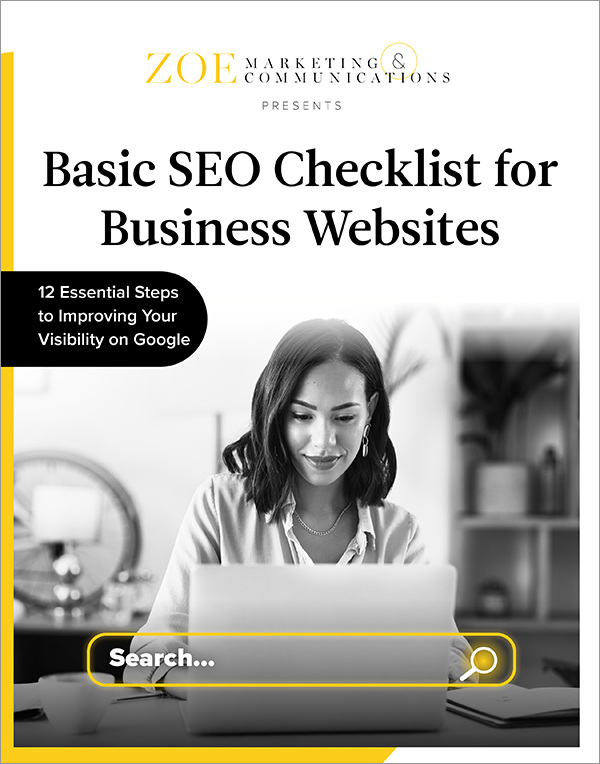
Download Your Basic SEO Checklist
Unlock the fundamentals of search engine optimization. This checklist provides step-by-step guidance to improve your site’s search ranking.

If people can’t find your website, your content might as well not exist. Search engine optimization (SEO) is one of the most critical digital marketing tactics — yet it’s easy to misstep.
Many businesses unknowingly make SEO mistakes that can hurt their rankings.
The good news? These mistakes are fixable. Zoe Marketing & Communications has supported companies with SEO since 2020. Here, we’ve identified frequent errors and how to solve them.
Unlock the fundamentals of search engine optimization. This checklist provides step-by-step guidance to improve your site’s search ranking.

Google constantly scans websites for relevant, helpful content. If your pages lack optimized metadata, headers and keywords, your site won’t rank as well as it could.
More than 55% of web traffic comes from mobile devices. If your website isn’t mobile-friendly, you’re losing visitors and hurting your rankings.
A slow, cluttered or frustrating site can drive visitors away. Google tracks this behavior and penalizes bad UX with lower rankings.
Stuffing your pages with excessive keywords doesn’t help — it hurts. Google penalizes sites that try to manipulate rankings with unnatural phrasing.

If you’re not tracking your website’s performance, you’re missing key insights on what’s working (and what’s not).
If your website takes longer than 3 seconds to load, visitors will leave — and Google takes note.
Google prioritizes websites that show authority and connectivity — and linking plays a major role in that.

Search engines struggle when multiple pages contain identical content. They don’t know which to rank higher, diluting your SEO.
If your business serves a specific region, but you’re not optimizing for local search, you’re missing out.
Google has about 200 ranking factors and updates its algorithms constantly. What worked last year might not work today.
SEO mistakes happen! But now, you know how to fix them. Making even small improvements can help boost your search rankings.
Need expert guidance? Talk to us at Zoe Marketing & Communications. We can optimize your SEO strategy and drive results.
Or, keep building your SEO knowledge with:

Unlock the fundamentals of search engine optimization. This checklist provides step-by-step guidance to improve your site’s search ranking.
As Zoe Marketing & Communications’ content manager, Kim Kovelle brings over 20 years of writing and editing experience in metro Detroit. She has strong roots in community journalism and a knack for making complicated topics make more sense.
